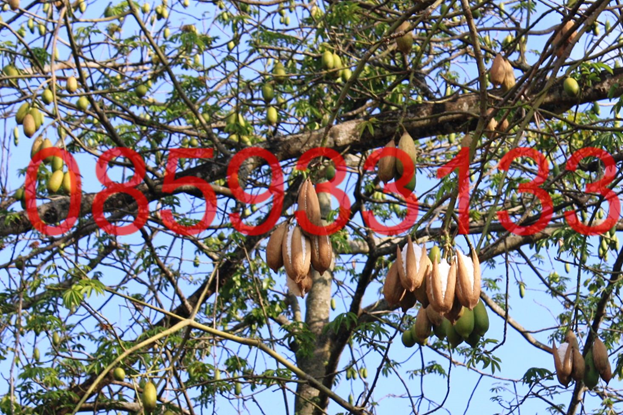When talking about kapok, then it is very much about fiber. Indeed, those kapok fibre manufacturers keep on distributing the natural product for pillow or bed stuffing. But more than that, did you know about the kapok fruit? It may not have very many uses or are well known, but the fruit is where the fiber originated. Here is an explanation for you.
The Fruit Of Ceiba Pentandra

The soft, silky, and buoyancy kapok will bring a good night’s sleep. But when you think about its origin, you will find that Kapok is a very versatile natural product. The tree itself is called the Ceiba Pentandra or Java cotton, Java kapok, ceiba, or Silk-cotton. The tree can grow as tall as 200 feet with a huge canopy and a lot of fruits.
The fruits are where the fibers came from. What makes it even more interesting is the fact that the kapok giant tree can tower up the rainforest and provide a large umbrella. Since it is so big, the fruit is also large. It has a 20 cm long length with ellipsoid capsule form. In the spring and summer, most of the fruit will split open and matured.
As it matures, the fruit will discharge a lot of silk cotton. At this moment, you can see that the 1.5 to 3 cm long fibers are attached to the seeds inside the pod. Both seed and fibers are the main ingredients for many products. Including the kapok filling materials, kapok seed oils, seed meals, etc. as kapok fibre manufacturers products.
Harvest And Yield
Kapok does not bloom its fruit each year, for worst, it can reach up to 5 to 7 years with no fruit or flower at all. But it can yield more than 15 kg of fiber/year, which is a lot. Since the tree is very tall, harvesting it needs a large amount of work. In this case, there are two possible ways to do this, either knocking them off the tree or collect those fallen to the ground.
Uses Of Kapok Fruit and Nutritional Values

After the harvest, as soon as possible, the fruits will be hulled by hand to remove their fiber and seeds. As they are separated, the fruit itself has different potentials. Taking a look at the nutritional values, the fruit contains huge moisture (47%), carbohydrate around 25%, protein 17%, fiber 4%, fats 2%, and ash 2%. There is also some vitamin A, C, and E in it.
Given that values, you can tell that the fruit will float on water. There is even some myth that says the fruits floated to Latin America from the land of Africa. How about the uses? Since it can be a waste and there is nothing much about it, most locals use kapok fruit for medicinal uses or burn it as biogas.
Basing on the information, you can tell that the fruit has a great role in the kapok uses. Like the fruit, it contains a lot of kapok seed and its fiber. Later on, the fibers are used as stuffing while the seed for kapok seed meal or oil. But surprisingly, the fruit is also very beneficial. If you are interested in the product and other information, check out kapokfibersuppliers.com.

